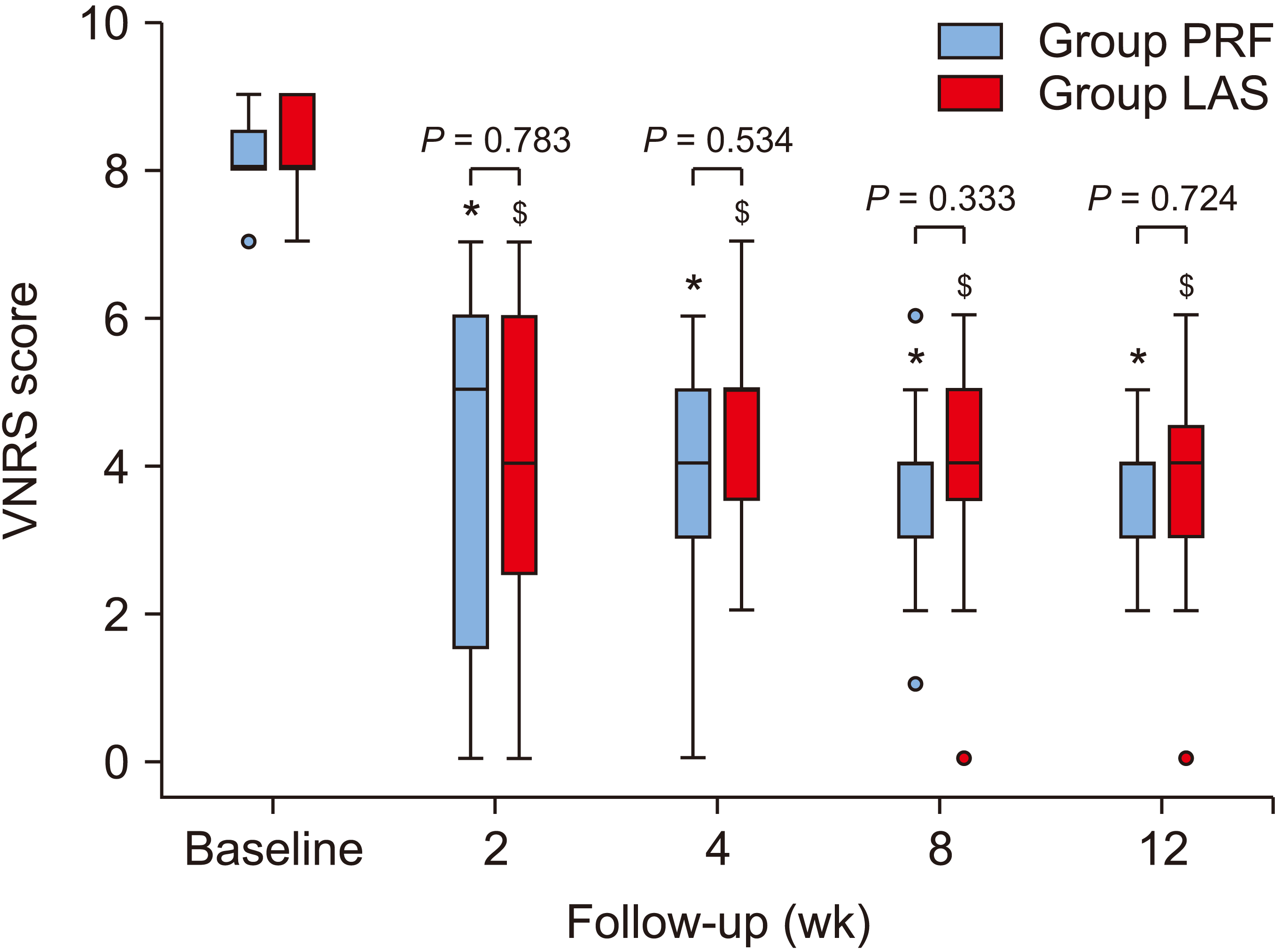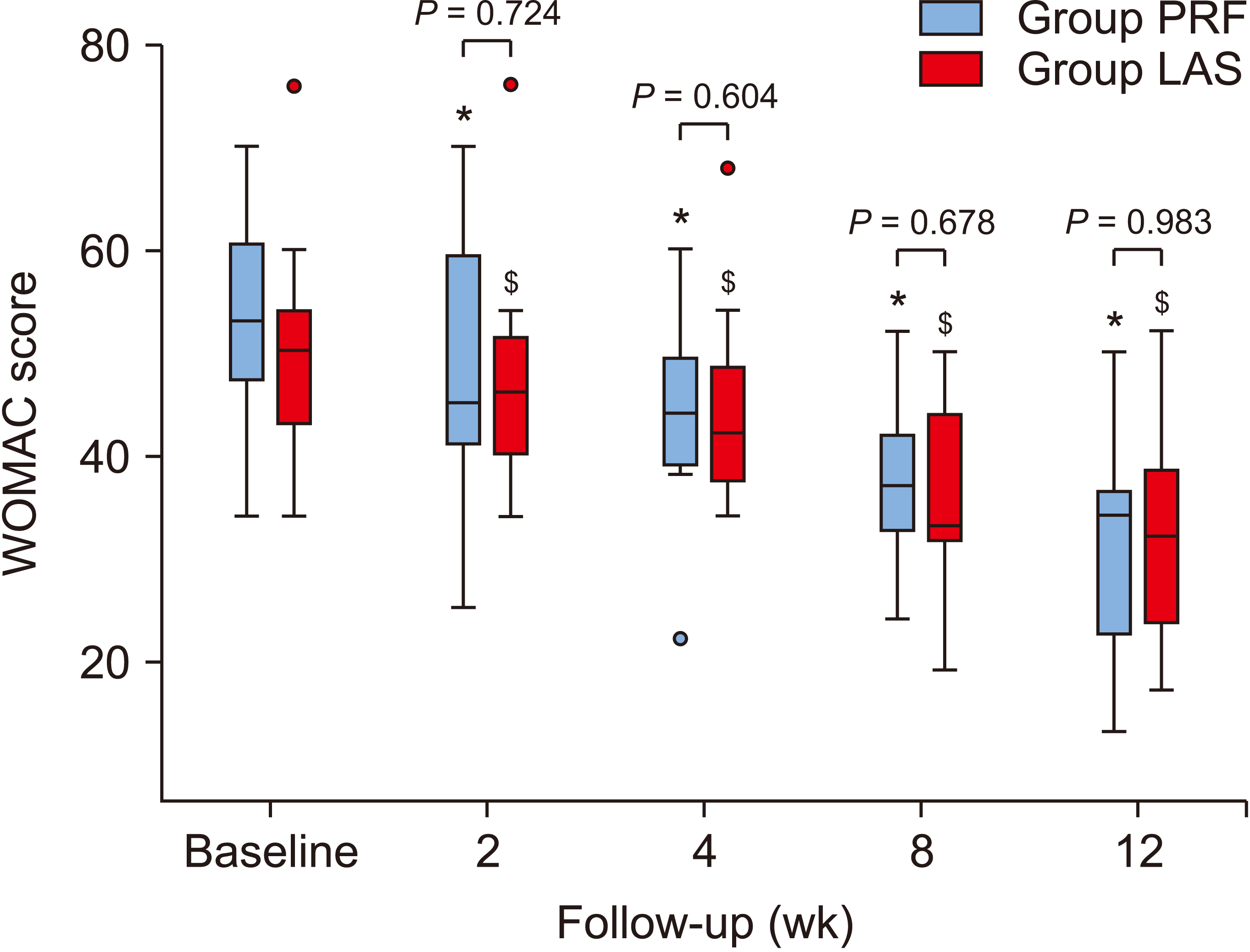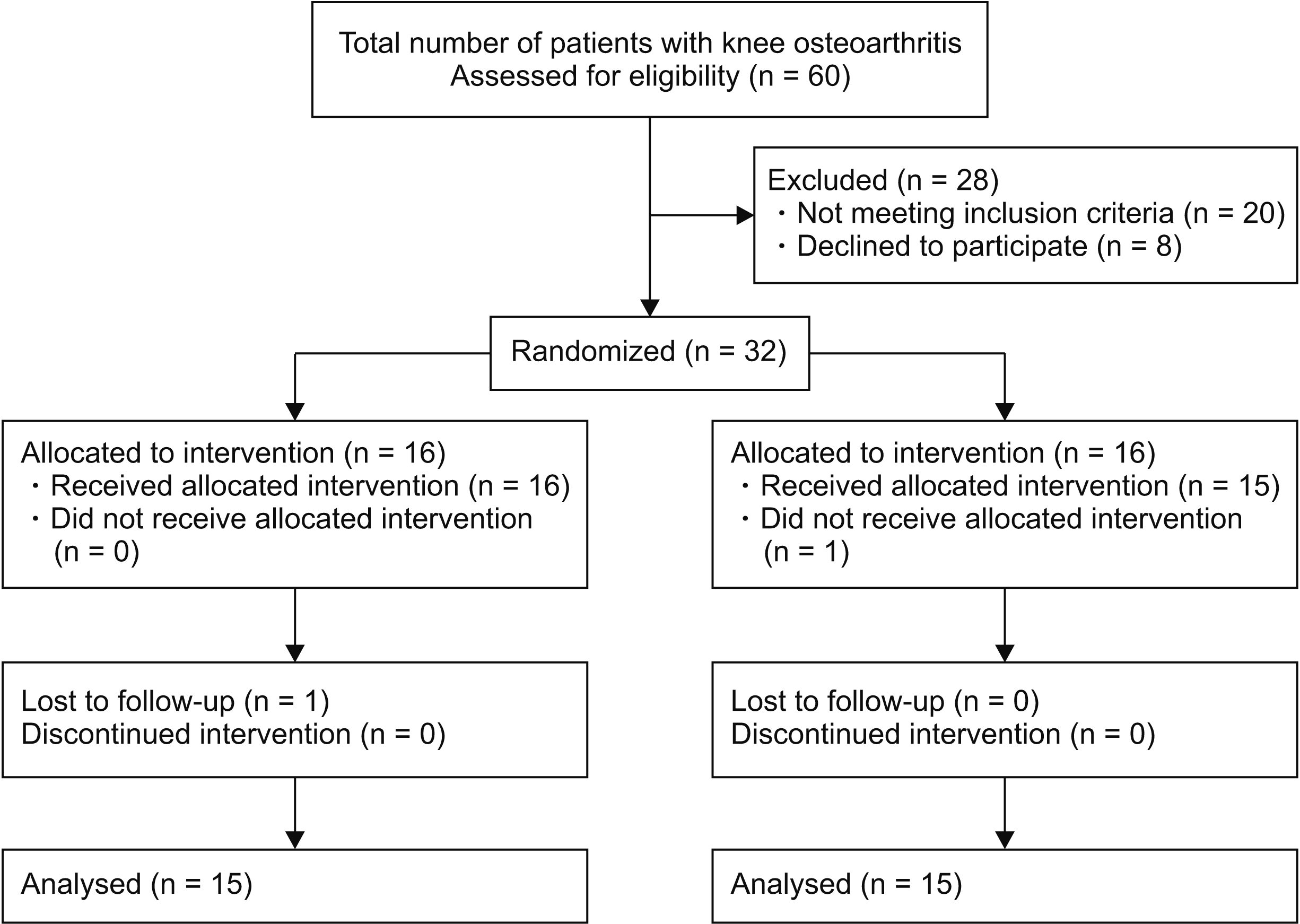3. Dureja GP, Jain PN, Shetty N, Mandal SP, Prabhoo R, Joshi M, et al. 2014; Prevalence of chronic pain, impact on daily life, and treatment practices in India. Pain Pract. 14:E51–62. DOI:
10.1111/papr.12132. PMID:
24304963.

4. Kess M, Stärke C, Henle P. 2017; [Unloading with insoles, orthotics and braces: pre-operative leg axis correction or independent treatment?]. Orthopade. 46:575–82. German. DOI:
10.1007/s00132-017-3438-y. PMID:
28589390.
5. Bozimowski G. 2015; A review of nonsteroidal anti-inflammatory drugs. AANA J. 83:425–33. PMID:
26742337.
6. Bellamy N, Campbell J, Robinson V, Gee T, Bourne R, Wells G. 2006; Intraarticular corticosteroid for treatment of osteoarthritis of the knee. Cochrane Database Syst Rev. (2):CD005328. DOI:
10.1002/14651858.CD005328.pub2. PMID:
16625636.

8. Hirasawa Y, Okajima S, Ohta M, Tokioka T. 2000; Nerve distribution to the human knee joint: anatomical and immunohistochemical study. Int Orthop. 24:1–4. DOI:
10.1007/s002640050001. PMID:
10774852. PMCID:
PMC3619852.

9. Vallejo R, Tilley DM, Williams J, Labak S, Aliaga L, Benyamin RM. 2013; Pulsed radiofrequency modulates pain regulatory gene expression along the nociceptive pathway. Pain Physician. 16:E601–13. DOI:
10.36076/ppj.2013/16/E601. PMID:
24077210.
10. Karaman H, Tüfek A, Kavak GÖ, Yildirim ZB, Uysal E, Celik F, et al. 2011; Intra-articularly applied pulsed radiofrequency can reduce chronic knee pain in patients with osteoarthritis. J Chin Med Assoc. 74:336–40. DOI:
10.1016/j.jcma.2011.06.004. PMID:
21872812.

11. Chua NH, Vissers KC, Sluijter ME. 2011; Pulsed radiofrequency treatment in interventional pain management: mechanisms and potential indications-a review. Acta Neurochir (Wien). 153:763–71. DOI:
10.1007/s00701-010-0881-5. PMID:
21116663. PMCID:
PMC3059755.

12. Bhatia A, Peng P, Cohen SP. 2016; Radiofrequency procedures to relieve chronic knee pain: an evidence-based narrative review. Reg Anesth Pain Med. 41:501–10. DOI:
10.1097/AAP.0000000000000414. PMID:
27281721.
13. Kirdemir P, Çatav S, Alkaya Solmaz F. 2017; The genicular nerve: radiofrequency lesion application for chronic knee pain. Turk J Med Sci. 47:268–72. DOI:
10.3906/sag-1601-171. PMID:
28263500.

14. Choi WJ, Hwang SJ, Song JG, Leem JG, Kang YU, Park PH, et al. 2011; Radiofrequency treatment relieves chronic knee osteoarthritis pain: a double-blind randomized controlled trial. Pain. 152:481–7. DOI:
10.1016/j.pain.2010.09.029. PMID:
21055873.

15. Kesikburun S, Yaşar E, Uran A, Adigüzel E, Yilmaz B. 2016; Ultrasound-guided genicular nerve pulsed radiofrequency treatment for painful knee osteoarthritis: a preliminary report. Pain Physician. 19:E751–9. DOI:
10.36076/ppj/2019.19.E751. PMID:
27389118.
16. Demir Y, Güzelküçük Ü, Tezel K, Aydemir K, Taşkaynatan MA. 2017; A different approach to the management of osteoarthritis in the knee: ultrasound guided genicular nerve block. Pain Med. 18:181–3. DOI:
10.1093/pm/pnw177. PMID:
27492742.

17. Adiguzel E, Uran A, Kesikburun S, Köroğlu Ö, Demir Y, Yaşar E. 2015; Knee pain relief with genicular nerve blockage in two brain injured patients with heterotopic ossification. Brain Inj. 29:1736–9. DOI:
10.3109/02699052.2015.1075171. PMID:
26479687.

18. Qudsi-Sinclair S, Borrás-Rubio E, Abellan-Guillén JF, Padilla Del Rey ML, Ruiz-Merino G. 2017; A comparison of genicular nerve treatment using either radiofrequency or analgesic block with corticosteroid for pain after a total knee arthroplasty: a double-blind, randomized clinical study. Pain Pract. 17:578–88. DOI:
10.1111/papr.12481. PMID:
27641918.

19. Baron G, Tubach F, Ravaud P, Logeart I, Dougados M. 2007; Validation of a short form of the Western Ontario and McMaster Universities Osteoarthritis Index function subscale in hip and knee osteoarthritis. Arthritis Rheum. 57:633–8. DOI:
10.1002/art.22685. PMID:
17471534.

20. Yasar E, Kesikburun S, Kılıç C, Güzelküçük Ü, Yazar F, Tan AK. 2015; Accuracy of ultrasound-guided genicular nerve block: a cadaveric study. Pain Physician. 18:E899–904. DOI:
10.36076/ppj.2015/18/E899. PMID:
26431143.
21. Sweet WH, Wepsic JG. 1974; Controlled thermocoagulation of trigeminal ganglion and rootlets for differential destruction of pain fibers. 1. Trigeminal neuralgia. J Neurosurg. 40:143–56. DOI:
10.3171/jns.1974.40.2.0143. PMID:
4587949.
22. Chang MC, Ahn SH. 2017; The effect of intra-articular stimulation by pulsed radiofrequency on chronic sacroiliac joint pain refractory to intra-articular corticosteroid injection: a retrospective study. Medicine (Baltimore). 96:e7367. DOI:
10.1097/MD.0000000000007367. PMID:
28658160. PMCID:
PMC5500082.
23. Kapural L, Vrooman B, Sarwar S, Krizanac-Bengez L, Rauck R, Gilmore C, et al. 2013; A randomized, placebo-controlled trial of transdiscal radiofrequency, biacuplasty for treatment of discogenic lower back pain. Pain Med. 14:362–73. DOI:
10.1111/pme.12023. PMID:
23279658.

24. Santana Pineda MM, Vanlinthout LE, Moreno Martín A, van Zundert J, Rodriguez Huertas F, Novalbos Ruiz JP. 2017; Analgesic effect and functional improvement caused by radiofrequency treatment of genicular nerves in patients with advanced osteoarthritis of the knee until 1 year following treatment. Reg Anesth Pain Med. 42:62–8. DOI:
10.1097/AAP.0000000000000510. PMID:
27875368.

26. Vas L, Pai R, Khandagale N, Pattnaik M. 2014; Pulsed radiofrequency of the composite nerve supply to the knee joint as a new technique for relieving osteoarthritic pain: a preliminary report. Pain Physician. 17:493–506. DOI:
10.36076/ppj.2014/17/494. PMID:
25415774.
27. Kim DH, Choi SS, Yoon SH, Lee SH, Seo DK, Lee IG, et al. 2018; Ultrasound-guided genicular nerve block for knee osteoarthritis: a double-blind, randomized controlled trial of local anesthetic alone or in combination with corticosteroid. Pain Physician. 21:41–52. DOI:
10.36076/ppj/2018.51. PMID:
29357330.
28. Sarı S, Aydın ON, Turan Y, Şen S, Özlülerden P, Ömürlü İK, et al. 2017; Which imaging method should be used for genicular nerve radio frequency thermocoagulation in chronic knee osteoarthritis? J Clin Monit Comput. 31:797–803. DOI:
10.1007/s10877-016-9886-9. PMID:
27142099.

29. McCormick ZL, Reddy R, Korn M, Dayanim D, Syed RH, Bhave M, et al. 2018; A prospective randomized trial of prognostic genicular nerve blocks to determine the predictive value for the outcome of cooled radiofrequency ablation for chronic knee pain due to osteoarthritis. Pain Med. 19:1628–38. DOI:
10.1093/pm/pnx286. PMID:
29300971.







 PDF
PDF Citation
Citation Print
Print




 XML Download
XML Download